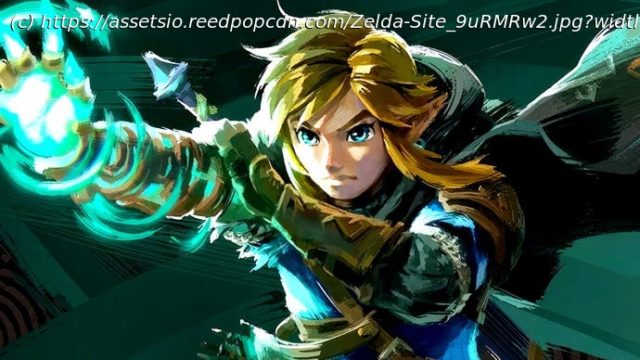Technical analysis, image quality testing and performance numbers on Nintendo’s next big game.
The Legend of Zelda: Tears of the Kingdom arrives in a turbulent time for gaming. As new releases continue to debut with a range of technical hiccups, the excitement of diving into a brand-new game has become increasingly muted. Even Nintendo-published titles, such as the recent Pokémon games, have had unfortunate technical flaws. So, when the latest entry in the Zelda series promises to be bigger and better than ever before, scepticism is warranted, at least when it comes to technical performance. Worry not — despite some troubling preview footage with clear performance problems, the day one experience for Tears of the Kingdom is excellent overall — and it’s not ‘too big for Switch’.
Going into this one, I was also interested to see what kind of Zelda game this would be, bearing in mind its surface-level similarities compared to Breath of the Wild. The Legend of Zelda series is known for constantly reinventing itself — finding new, interesting ideas to push the medium forward. The task of making a sequel to one of these games is an unenviable one — the weight of expectation and historical importance cannot be understated, and as a result, direct sequels in the series have remained rare.
There are exceptions, however, and they are generally well regarded — The Legend of Zelda: Majora’s Mask and The Legend of Zelda: A Link Between Worlds both follow in the footsteps of their highly successful predecessors, while also offering fresh new ideas that have captivated fans of the series everywhere.
Such is the case with Tears of the Kingdom. Make no mistake, this is a direct sequel to 2017’s Breath of the Wild, but contrary to some concerns, this is not a retread. Tears of the Kingdom builds on a strong foundation and takes the concept to the next level. It’s bigger in all the right ways, with more carefully designed sequences and environments to explore, satisfying my desire for proper Zelda dungeons with real level design. You’ll revisit Hyrule, but there’s so much more, both above and below.
This is one of the major changes in game design — Breath of the Wild focused exclusively on the lands of Hyrule, but Tears of the Kingdom takes the player up into the sky to explore beautiful floating ruins and below the surface into a subterranean region. The game world remains just as dynamic — wind blows, fire burns, and light bounces — but new features enhance the already gorgeous presentation. A new procedural cloud system has been implemented to better support the skies you’ll be exploring. Much like Breath of the Wild, Tears retains volumetric lighting and light scatter, often using them to great effect, while inclement weather can be startling. The feeling of being caught in a thunderstorm with lightning that casts shadows with each strike creates a powerful mood.
Frankly, what makes this game so impressive is the scope, fidelity and interactivity, all on a portable system. Link can travel seamlessly from the ruins of the sky to the surface below with no loading screens or major hiccups. The world has a dynamic time of day, something I’m not always a fan of, but it works well here, especially when combined with actual bounce lighting via radiosity. Everything is governed by realistic physics simulation. The wind simulation is impressively robust, affecting objects around the world to varying degrees based on their material properties and weight. This was already present in Breath of the Wild, but it’s honestly one of the best implementations I’ve seen in a game of this size.
New to Tears of the Kingdom is the Ultrahand feature — expanding on concepts from Breath of the Wild, this new power allows Link to physically manipulate objects in the world and fuse them together to create larger objects. Combined with the new Zonai devices, you can build all sorts of contraptions, all controlled by the game’s physics system. I feel like I’ve only scratched the surface, and I’m curious to see what others will build when the game is released.
Домой
United States
USA — software The Legend of Zelda: Tears of the Kingdom — the Digital Foundry...






